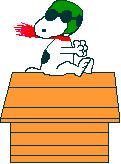| The wing close
out is probably one
of the most
intense sessions of the
building process. There is much that must be done leading upto
the
close process and a great deal that must be completed in a short period
of
time. There are something over 1000 square inches of surface area
that
need to be fully covered with adheasive prior to the close. It's
not
a difficult process but once started has to be moved to completion
without
stopping or the initial adheasive will setup and start curing before
you
can get the wing closed. We started about 10:30 in the morning
and
by 12:15 were completed with the loading of the weight. The
photos
below show much of the advance work that had to be done upto the final
load
of sandbags and cinder blocks. |
|
PS:
This is
the first set of
photos taken with my
new Sony Digital CamCorder using the photo option. They came out really
well
considering no flash was used in a normally lighted garage. These
have
been further compressed to make the resulting file as small as possible
for
web use. Double click on any photo for a larger
display. |
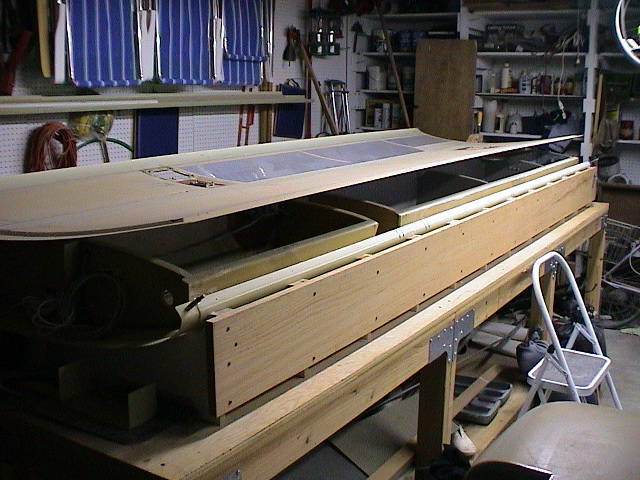 |
The wing bottom is finally ready after my first attempt at
sealing the fuel bay area had to be redone because the initial coat of
Jeffco 9700 cured on me before I could get the second coat on. I
waited a week to sand it down and put on the needed two coats of
sealant. The Jeffco is great stuff but must be mixed in rather
small batches and applied quickly or it will setup in the pot.
The working time is only about 15 minutes. The cure is
quick and the surface is smooth. |
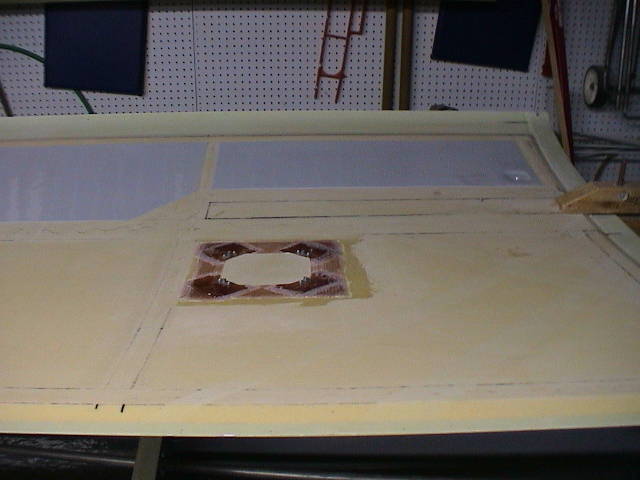 |
This shows the access panel along with the inner fuel bay
bottom. In the right lower corner of the fuel bay you can see the
fuel/water drain at what will be the lowest point in the fuel tank. |
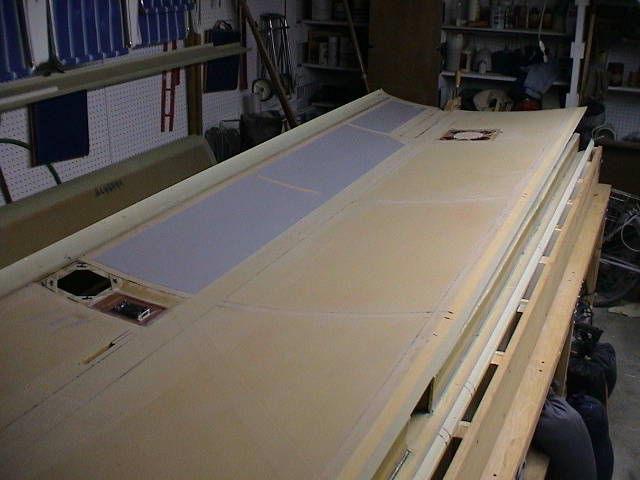 |
Here is a clear view of the lower wing skin which shows
the access panels, fuel bay and sanded areas for close out. The
lower skin is now ready for closure.
The first part of the close process was to wet out the
sanded areas with adheasive between the lines shown.
|
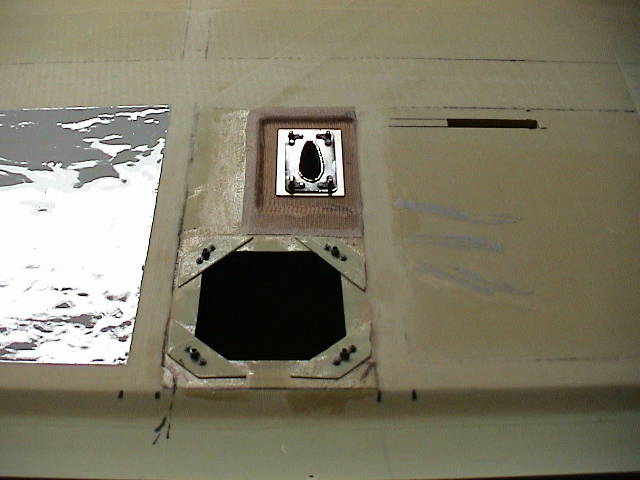 |
This shows the access opening for the aileron idler arm
and the pitot tube. The area above the access opening is the
bottom mount for the pitot tube. This was installed in a hard
point glassed into the wing. The tube is shimmed under the upper
part to level the tube into the relative wind. The small slot to
the right of the pitot base is the opening for the retractable tiedown. |
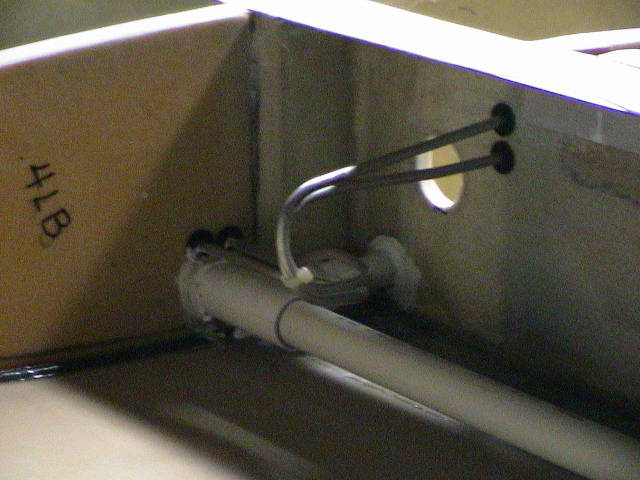 |

|
| The photos above and below show the pitot line
and electrical conduit (upper left), spar bolt access panel (upper
right), Navigation antenna installed against upper wing skin (lower
left) and retractable wing tie down (lower right). Note the
braided ground line which runs from the fuel bay filler to the vent
line, elevator idler arm, tiedown, and ultimately all metal ponts on
the wing before return to a common ground point. |
 |
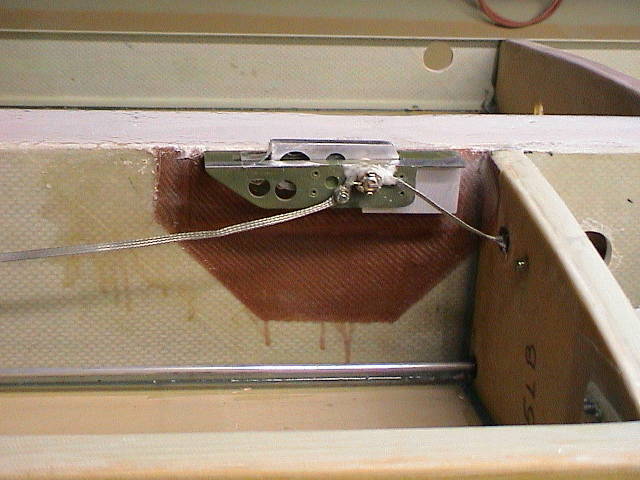
|
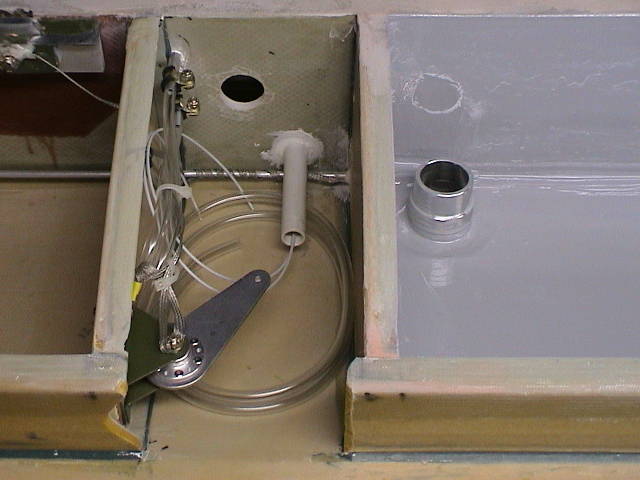 |
This photo shows the fuel inlet which has a ground wire
attached an runs to the outside of the fuel bay, connects with the vent
line and then to the idler arm. It runs back and over to the wing
tiedown. Inside the opening with the elevator idler arm you can
see the electrical wiring for the pitot heater along with the pitot and
static lines. The flexable pitot lines are already permanently
attached to the aluminum lines through the wing. The tubes are
long enough to extend out the base for installation. A tie point
is provide for keeping them clear of the control arms. |
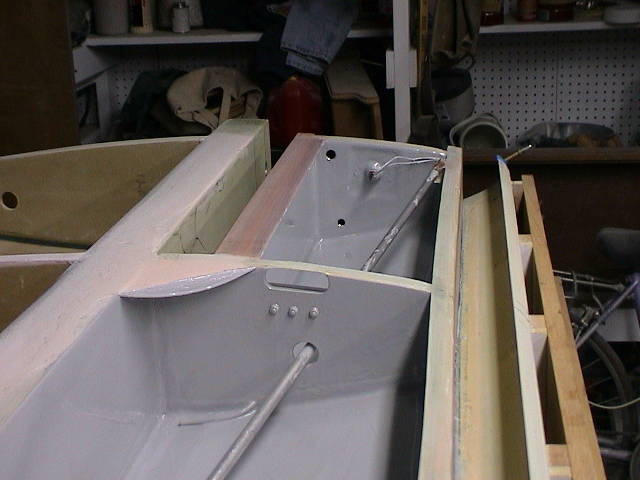 |
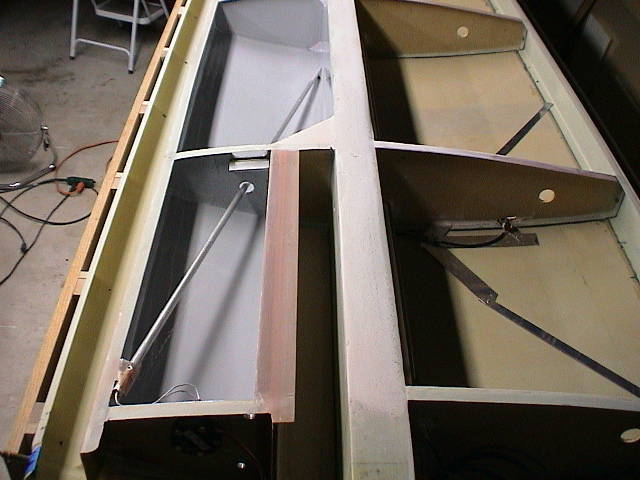
|
| These shots show the completed and sealed fuel
bays. The (upper left) photo shows the fuel level tube running
though the first two bays. You can also see the vent line between
the first two bays along with the openings for the fuel lines.
The (upper right) shows the full view of the inside wing bays
with nav antenna and fuel bays. The (lower left) shows the fuel
level sensor connection. One important point to remember is to
ream out the fuel connection openings after sealing and before
closeout. The (lower right) shot shows the slosh valve between
fuel bay one and two. |
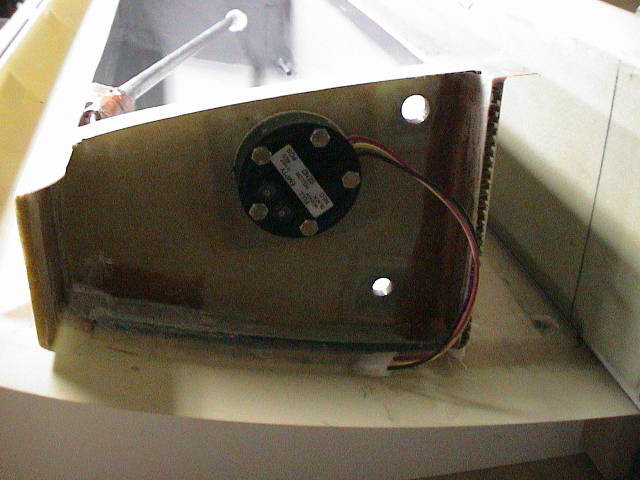 |
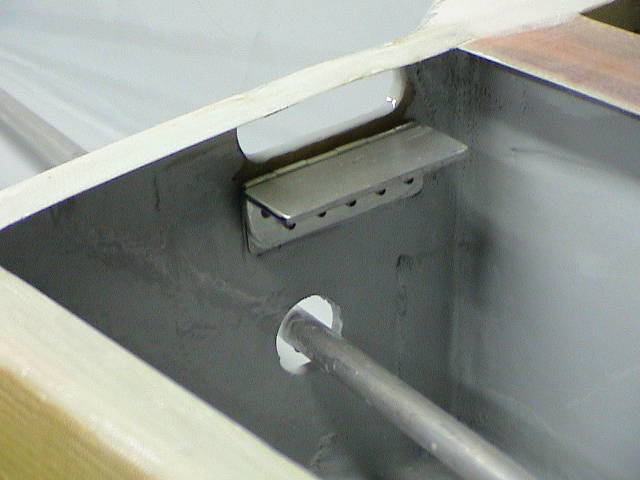
|
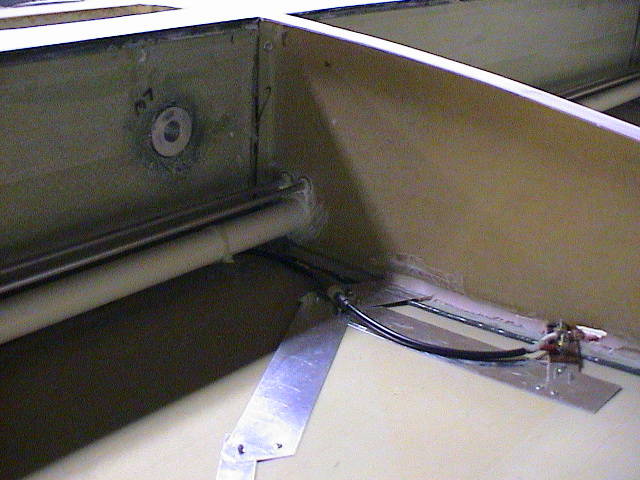 |
This shows the connection for the navigation antenna.
I am using the Archer antennas for all my installations.
The are inexpensive and foolproof. I cut an opening in the
rib to slide the side of the antenna arms through. The gap is
then filled with epoxy filler and the cable mounted. the wings of
the antenna are simply pop riveted to the wing skin. This
allows the antenna to be set in the optimum open position. |
 |
Here is my close out team with yours truely out of the
shot. My wife, daughter and her long term future significant
other (Nope!) were my only crew. They did a great job and painted
on a wetting coat of adheasive on all surfaces before I laid down the
thicker bead of adheasive / flox required for gap filling and strength.
The pre-wet of both the bottom wing skin and the spar/ribs made
the process much smoother. |
| The next two shots show the wing just before
the skin bottom was placed into position. The adheasive is a dark
gray and can be seen on all surfaces. I put on a very liberal
amount and can only hope that is was enough/not too much. It
thickened well and with the prewet done smoothed out well. Only
time is will tell if the fuel bay sealed out completely. The
joints looked fairly good after the closeout. Some excess was
evident only on the inside spar area. |
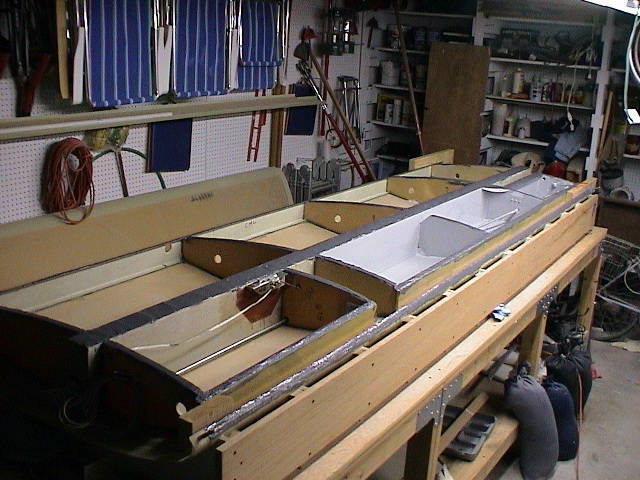 |
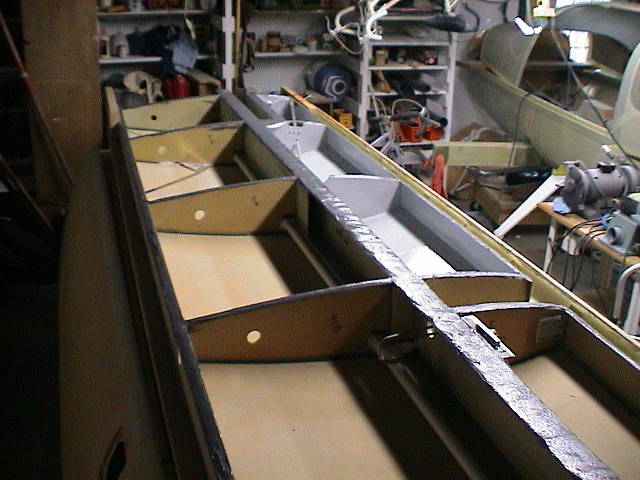
|
 |
Well...it is done. Almost a thousand pounds of total
weight is spread over the entire wing with concentration on the areas
over the spars and the ribs. I was not too happy with what I
could see of the squeeze out at the front spar. There seemed to
be a gap at the leading edge of the joint and that may prove to be a
problem. The opening is too small and long to get any sealant to.
Time will tell. |
